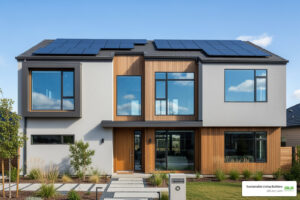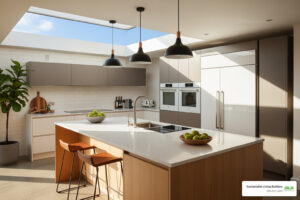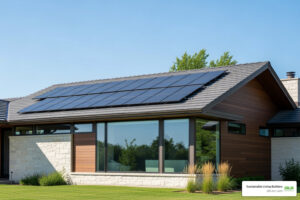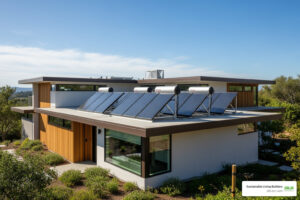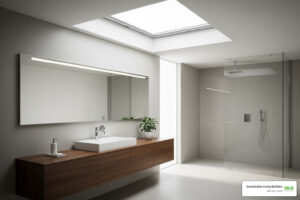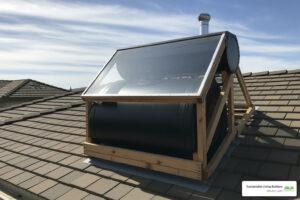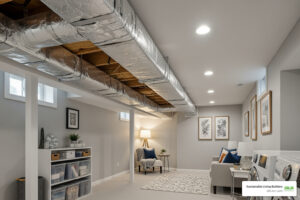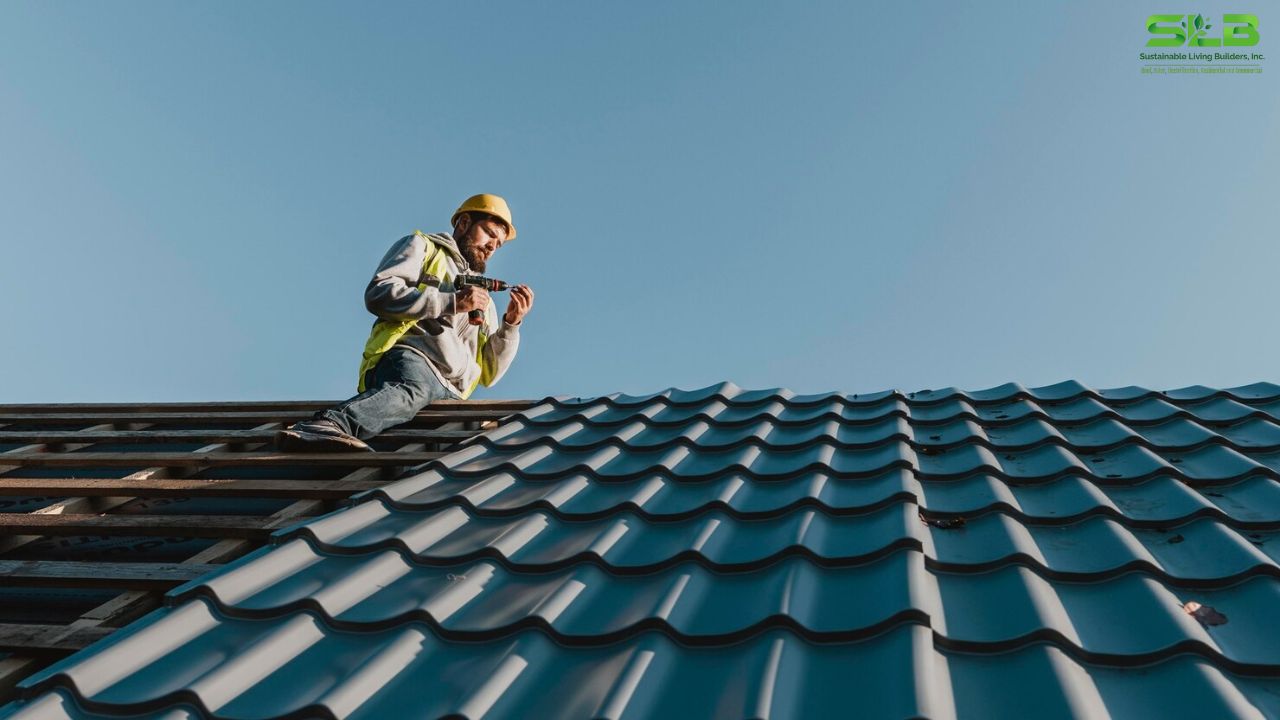
Best Residential Roofing Materials for Long-Term Durability
When it comes to protecting your home from the elements, few decisions are as important as choosing the right roofing material.
The roof over your head isn’t just a critical structural component, it’s an investment in your home’s longevity, appearance, and its overall value. With numerous residential roofing options available today, homeowners need to make important choices that will impact their homes for decades (if not more!) ahead.
This comprehensive guide will help you understand various roofing materials, including options that offer exceptional durability and long-term value. Also learn about how to select reliable “residential roof repair near me.”
From traditional favorites to modern innovations and sustainable alternatives, this guide is here to help you make an informed decision for your home’s unique needs.
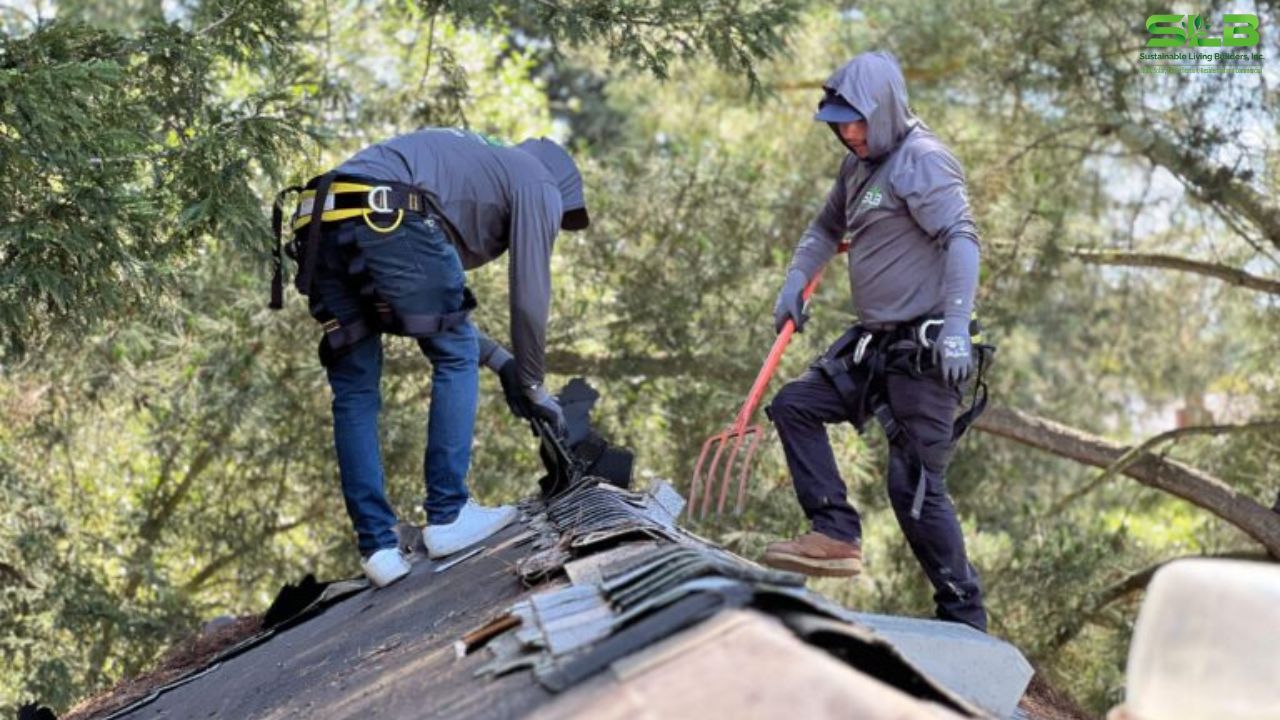
Understanding Residential Roofing Priorities
Before diving into specific materials, it’s important to understand what makes a roofing system truly excellent for residential purposes.
The ideal residential roof must offer almost all of these key factors:
- Durability and weather resistance
- Cost-effectiveness and lifespan value
- Energy efficiency and insulation properties
- Aesthetic appeal and architectural compatibility
- Maintenance requirements
- Environmental sustainability
- Local code compliance
Your climate, budget, and architectural style will influence which material fits your needs. Now, let’s explore the top roofing materials.
Asphalt Shingles: The Traditional Choice
Asphalt shingles remain the most widely used roofing material for homes in North America, a part of approximately 80% of all American homes. This popularity stems from their excellent balance of performance, price, and versatility.
Types of Asphalt Shingles
Three-tab shingles represent the traditional and the most economical option among asphalt shingle types. These flat shingles create a uniform appearance and typically last 15–20 years, given proper maintenance.
Architectural shingles (dimensional or laminate shingles) offer greater thickness, durability, and visual appeal. While some provide dimensional texture that mimics more expensive materials like slate or cedar shake, premium options can easily last 25–30 years or even more.
Luxury or designer shingles represent the premium tier in asphalt shingles, with enhanced aesthetic options and maximum durability. These typically deliver impressive curb appeal with lifespans approaching roughly 30–40 years.
These roof shingles come in dozens of colors, from gray to warmer earth tones. Many types of roofing underlayment pair with these systems to provide additional moisture protection.
SLB Inc.’s roofing services page details the importance of professional installation for maximizing shingle performance.
Metal Roofing: Superior Longevity for Residential Applications
While asphalt dominates the market, various types of residential metal roofing continue gaining popularity for their exceptional durability and performance.
Modern metal roofing systems have overcome historical limitations and are now a popular choice for many homeowners.
Metal Roofing Options for Homes
Standing seam panels represent the premium choice in residential metal roofing. These feature concealed fasteners and vertical seams that prevent water infiltration. With lifespans of 40–70 years and minimal maintenance requirements, they offer tremendous long-term value despite higher initial costs.
Metal shingles and tiles provide the benefits of metal while mimicking traditional materials like slate, clay tile, or wood shake. These options bridge the gap between conventional aesthetics and modern performance.
Corrugated and ribbed panels offer economical metal roofing solutions that still deliver excellent durability. While these are less expensive than standing seam systems, they typically need more monitoring as they use exposed fasteners.
For comprehensive guidance on metal roofing installation for all types of residential metal roofing, SLB Inc. offers an excellent metal roofing guide that covers essential details for proper installation and maintenance.
The benefits of residential metal roofing extend beyond longevity. These systems offer superior fire resistance, excellent wind resistance, energy efficiency, and sustainability. Many metal roofs also contain recycled content and remain 100% recyclable at the end of their service life, making them a sustainable choice.
Clay and Concrete Tiles: Timeless Elegance
For homeowners seeking distinctive style and exceptional durability, clay and concrete tiles represent attractive (although heavier) options for residential roofing applications.
Clay Tile Roofing
Terracotta clay tiles have adorned homes for centuries, particularly in Mediterranean, Spanish, and southwestern architectural styles. Their distinctive appearance combines with impressive technical specifications:
- Extreme durability with a whopping expected lifespan of 50–100 years
- Excellent fire resistance (Class A rating)
- Superior thermal properties that improve energy efficiency
- Resistance to insects, rot, and salt air (making them perfect for coastal regions)
- Architectural distinctiveness that enhances curb appeal
The primary limitations of clay tile systems include their significant weight (requiring adequate structural support) and higher installation costs compared to conventional materials.
Concrete Tile Options
Concrete tiles offer many benefits similar to clay while typically costing less. Modern manufacturing techniques allow concrete tiles to mimic various profiles including Spanish barrel tiles, flat slate-like tiles, and even wood-look options.
These systems boast an impressive lifespan of 50+ years with minimal maintenance requirements beyond the occasional cleaning and inspections. Similar to clay tiles, concrete tiles also provide excellent insulation properties that can reduce heating and cooling costs.
Natural and Synthetic Slate: Premium Protection
Few roofing materials match the elegance and longevity of natural slate. These stone tiles have protected structures for centuries with unmatched durability.
Natural Slate Roofing
Authentic slate offers an excellent performance. Some key features include:
- Century-plus lifespans (100-200 years for quality slate)
- Completely fireproof material
- Impervious to insects, rot, and mold
- Exceptional weather resistance
- Timeless aesthetic appeal that enhances architectural value
Note: These advantages come with significant considerations: slate’s considerable weight requires appropriate structural support, installation demands specialized expertise, and material costs exceed most alternatives.
Synthetic Slate Alternatives
For homeowners who are drawn to slate’s appearance but are concerned about weight or cost of slate tiles, synthetic slate products are reliable alternatives. Made from recycled materials and polymers, these products replicate slate’s appearance, while offering:
- Lighter weight suitable for standard roof structures
- Lower material and installation costs
- Easier cutting and installation
- Comparable or better impact resistance
- Excellent warranty coverage (typically 50+ years)
High-quality synthetic roofing products convincingly mimic natural materials while offering modern performance advantages.
Cedar Shake and Wood Shingles: Natural Beauty
Traditional wood roofing materials are perfect for homeowners who value natural aesthetics and renewable resources.
Cedar shake roofs offer distinctive texture, natural insulation properties, and exceptional wind resistance. With proper maintenance including appropriate treatments and inspections, cedar shake systems can last approximately 30–40 years in favorable climates.
Wood roofing performs best in moderate climates without extreme moisture or wildfire risk. These systems require more maintenance than synthetic alternatives, including periodic treatments to resist moisture, UV damage, and insect infestation.
For homeowners who love wood’s appearance but seek greater durability, synthetic cedar alternatives are the answer. These provide similar aesthetics as traditional cedar shakes (or shingles) with lower maintenance requirements and enhanced longevity.
Composite and Synthetic Roofing: Modern Innovation
Technological advancements have produced impressive composite and synthetic residential roofing options that combine the appearance of traditional materials like cedar shakes with enhanced performance characteristics.
These engineered products generally incorporate recycled materials and advanced polymers to create shingles, shakes, and tiles that resist impact, fire, and weather damage.
Top performing products offer:
- Class 4 impact resistance (the highest rating)
- Class A fire ratings
- Wind resistance exceeding 110 mph
- Lifespans of 40-50+ years
- Lower weight than natural counterparts
- Reduced maintenance requirements
- Enhanced color stability
The residential synthetic roof category continues expanding with innovative products that address the limitations of traditional materials while offering a similar aesthetic appeal.
Flat and Low-Slope Residential Roofing Systems
Contemporary home designs increasingly incorporate flat or low-slope roof sections that require specialized materials that differ from pitched roof applications.
Modern Flat Roof Options
PVC (Polyvinyl Chloride) Membranes offer excellent durability and hot-air weldable seams that create a monolithic surface. These white or light-colored membranes deliver excellent reflectivity for energy efficiency.
TPO (Thermoplastic Olefin) systems provide excellent performance at competitive prices. These heat-reflective membranes resist dirt accumulation while offering good flexibility and environmental performance.
EPDM (Ethylene Propylene Diene Monomer) rubber roofing delivers exceptional durability and weather resistance. While traditionally black, white EPDM options are available for enhanced energy efficiency.
Modified Bitumen systems combine traditional built-up roofing techniques with polymer modifications for enhanced performance. These systems work well in residential applications requiring durability and repairability.
For homes with flat sections, proper drainage design using tapered insulation and appropriate roof vents is truly essential to ensure long-term performance.
Common Residential Roofing Problems and Solutions
Even the best roofing materials can develop issues if they’re not properly installed or maintained. According to SLB Inc.’s informative article on common residential roofing problems, the most frequent issues include:
- Water leaks and moisture damage – Often resulting from poor flashing details around penetrations and roof transitions
- Wind damage – Particularly affecting shingles and edge details
- Poor installation practices – Leading to premature failure even with quality materials
- Inadequate ventilation – Causing heat and moisture buildup that degrades roofing components
Addressing these issues requires working with qualified roofing contractors who understand proper installation techniques, ventilation requirements, and manufacturer specifications.
Selecting the Right Roofing Contractor
The quality of installation directly impacts your roof’s performance regardless of material choice. When selecting a roofing contractor, follow these tips:
- Verify proper licensing, insurance, and manufacturer certifications
- Review past projects and client testimonials
- Ensure they provide detailed written estimates
- Confirm warranty coverage for both materials and workmanship
- Ask about their experience with your chosen roofing material
SLB Inc. has established itself as the best roofing contractor by focusing on quality installation practices, thorough project management, and exceptional customer service. And as a cherry on top, they’re sustainable!
Climate Considerations for Material Selection
Your local climate significantly impacts which roofing materials will perform best for your home. Therefore, it’s important to make a decision based on where you live.
Hot, sunny climates benefit from reflective materials like “cool roofs” that minimize heat absorption. Light-colored metal, specially formulated asphalt shingles with high solar reflectance indices, and certain tile products excel in these regions.
Cold, snowy environments require materials that resist ice dam formation and handle freeze-thaw cycles. Metal roofing particularly excels in these conditions by shedding snow and minimizing ice buildup.
High-wind regions demand systems with enhanced wind warranties. Look for asphalt shingles rated for 130+ mph winds, properly installed metal systems, or mechanical edge enhancements.
Coastal environments need materials that are resistant to salt corrosion and moisture. Premium metals with coatings, quality asphalt products, and certain composite materials perform well in these challenging conditions.
Storm Damage and Roofing Repair
Even the most durable residential roofing materials can sustain damage during unforeseen severe weather events. When storms strike, prompt assessment and repair become critical to prevent secondary damage to your home’s roofing.
According to SLB Inc.’s storm damage roofing repair resources, homeowners should:
- Document damage thoroughly for insurance purposes
- Address immediate water intrusion issues promptly
- Work with qualified inspectors to identify all damage
- Select repair contractors with storm restoration experience
- Understand insurance coverage and restoration options
Experts recommend professional inspection after any significant weather event, even when damage isn’t apparent as it could be hidden.
Energy Efficiency and Sustainable Roofing
Modern roofing increasingly focuses on energy performance and sustainability. Energy-efficient options include:
Solar-ready designs that facilitate the installation of photovoltaic systems, whether immediately or in the future.
Cool roof technologies that reflect solar energy rather than absorbing it into your home, reducing cooling costs and urban heat island effects.
Recycled and recyclable materials that reduce environmental impact while delivering excellent performance.
Insulated roof panels that enhance thermal performance beyond traditional systems.
Many energy-efficient roofing options qualify for utility rebates, tax incentives, or certification credits, make sure to check this with laws and regulations that are relevant to your location.
Final Considerations in Making Your Residential Roofing Decision
Choosing the right roofing material for your home involves balancing numerous factors including durability, aesthetics, budget, and local conditions. The best choice ultimately depends on your specific circumstances, priorities, and home architecture.
For most American homes, architectural asphalt shingles continue to offer the best balance of performance and value, particularly premium products with enhanced warranties.
For homeowners who prioritize maximum longevity above all, metal roofing systems provide exceptional performance despite higher initial costs. Those seeking distinctive aesthetics might consider clay tile, slate, or quality synthetic alternatives.
Whatever material you choose, proper installation remains crucial to protect your home. Working with experienced residential and commercial roofing contractors like SLB Inc. ensures your investment delivers its full potential performance and lifespan.
For personalized guidance on selecting the ideal roofing system for your home, consulting with knowledgeable professionals who understand local conditions and building codes will help you make the most informed decision for your most important investment—your home.
Sustainable Living Builders (Slb Inc.) supports sustainability through green living solutions, including solar solutions, gutter services, roofing, and more for both residential and commercial buildings. They’re your answer to commercial as well as “residential roof repair near me” if you live in or around California.
Offering a free estimate within 48 hours, Slb Inc. offers the best sustainable solutions for residential and commercial projects in the regions of Sonoma, Marin, and Napa counties in California.
Related Articles You May Like
✔️ Why a Solar Roof Tesla Is the Perfect Year-End Upgrade
✔️ Roofing
✔️ Roofing Contractor
✔️ Affordable Roofing Services
✔️ Emergency Roofing: What to Do When Disaster Strikes
MULTIPLE SERVICES, EVEN MORE SUSTAINABLE SOLUTIONS!
If you’re looking for a team of experienced, hard-working, and committed team to take your home or business to a more sustainable future, Sustainable Living Builders, Inc. is here for you! From holistic roofing solutions to innovative solar options, we have many services to help you protect your home and your pocket in a single place. Are you ready to get started?
